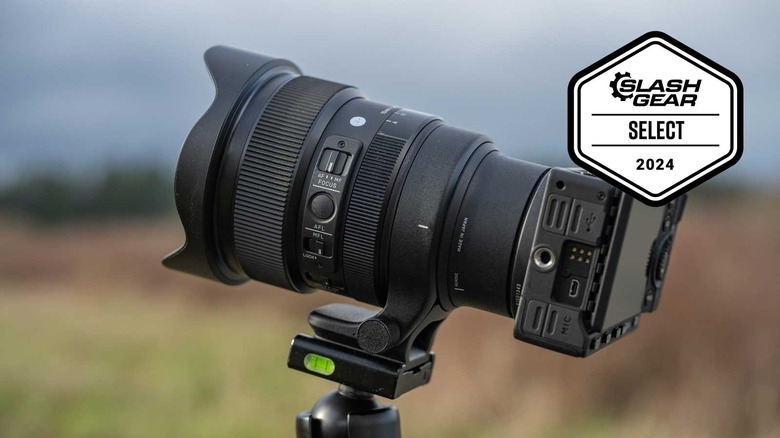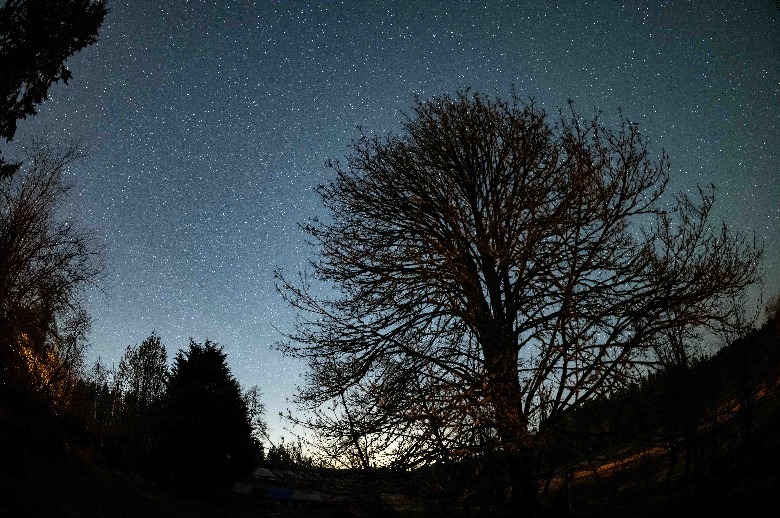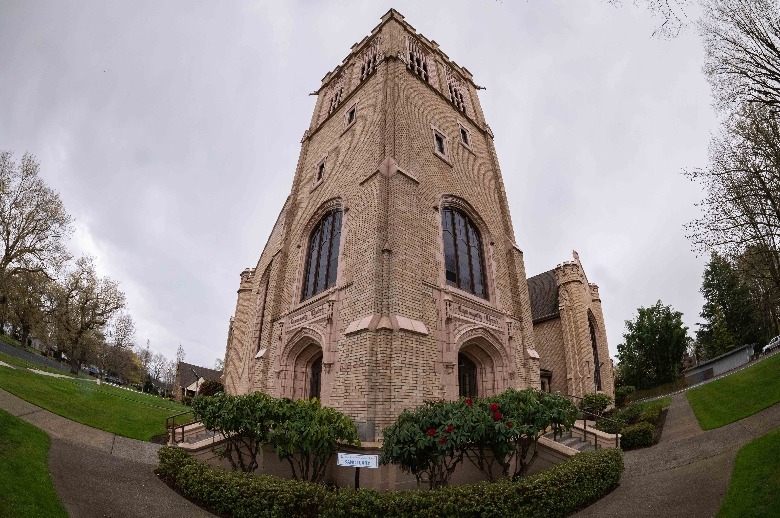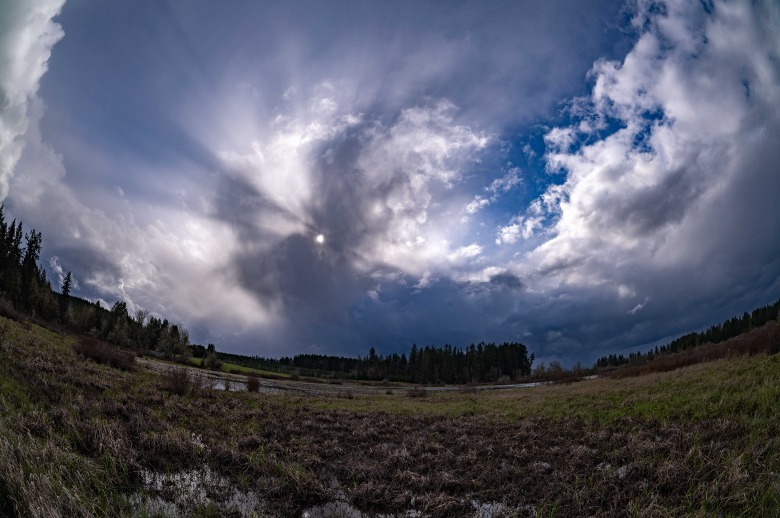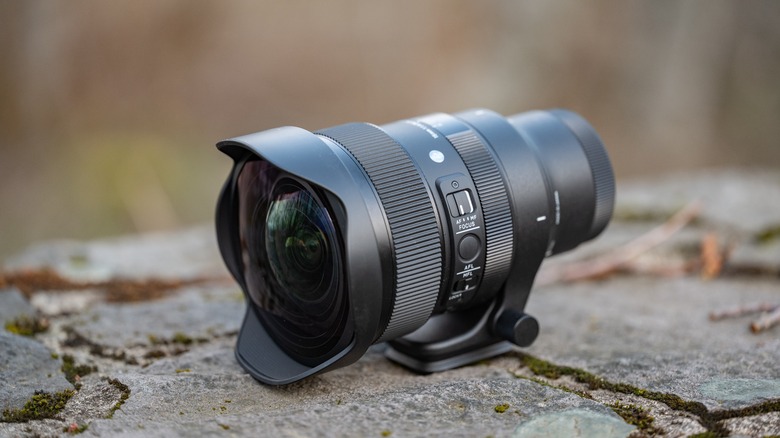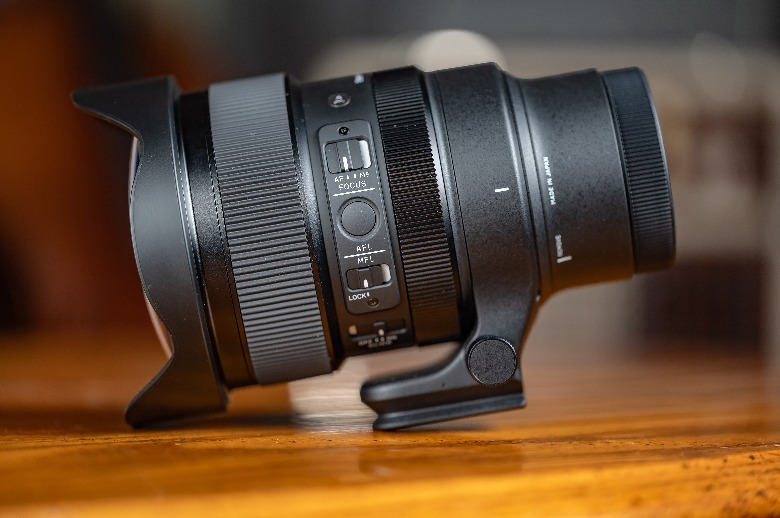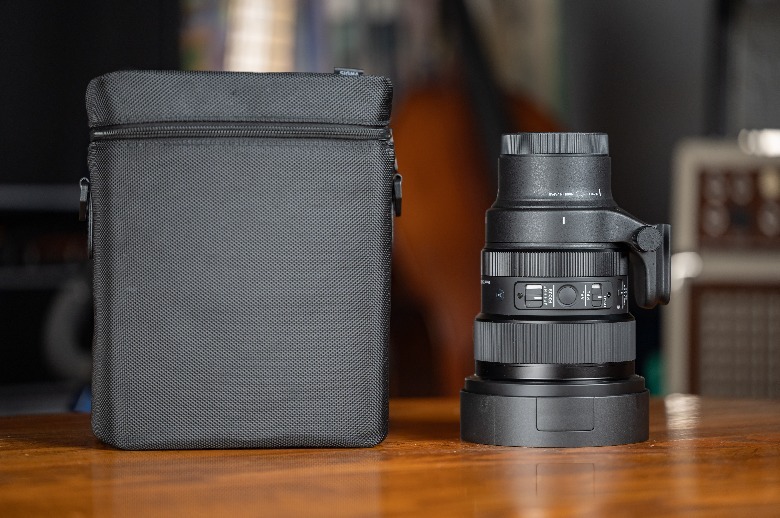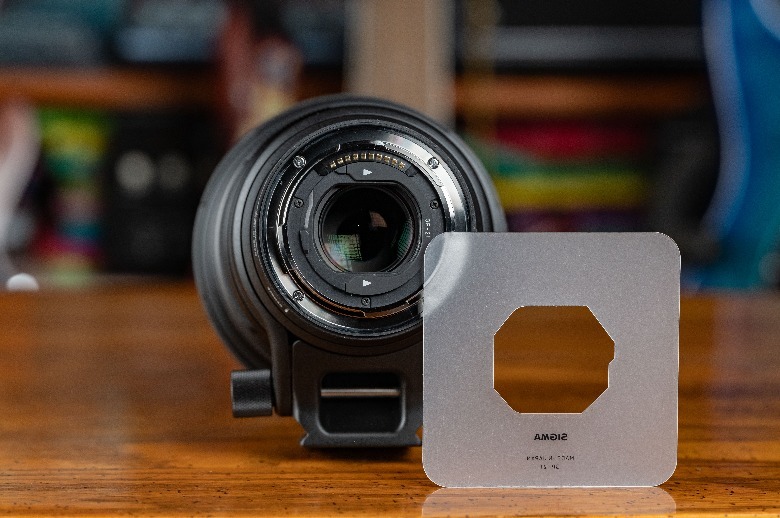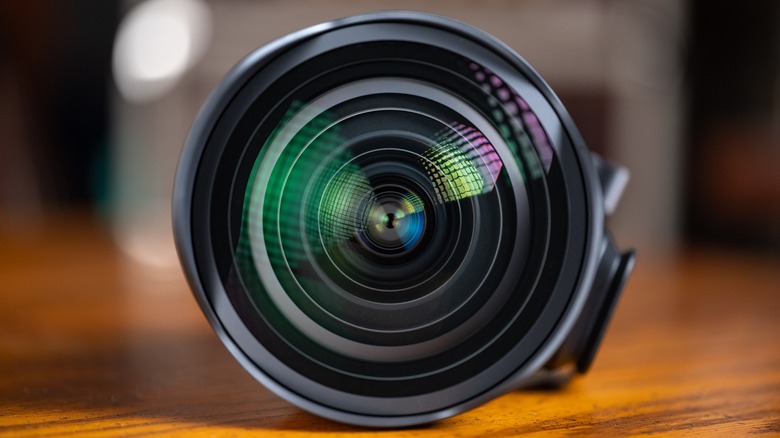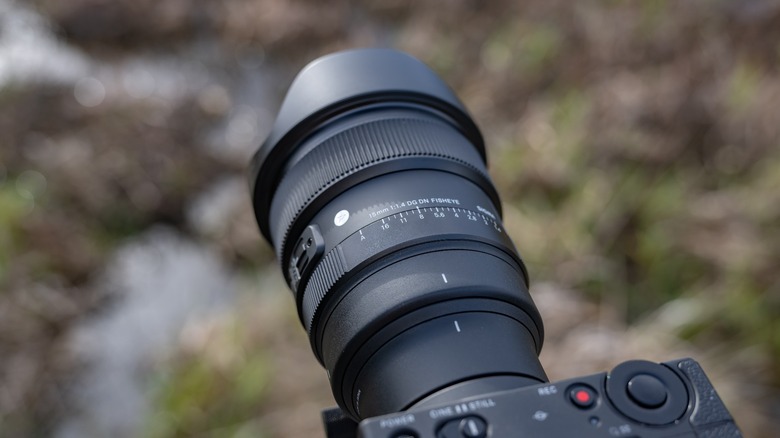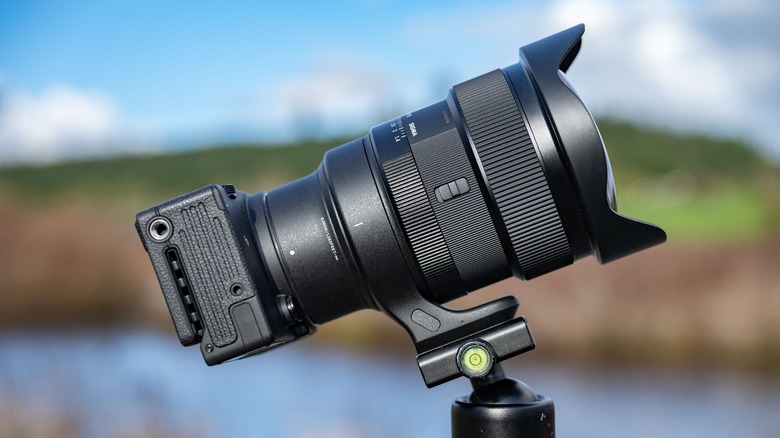Sigma 15mm F1.4 DG DN Diagonal Fisheye Lens Review: Unique Optic With Incredible Creative Potential
- Extremely bright aperture for a 15mm lens
- Unique optical construction enables interesting creative opportunities
- Robust construction
- Ideal for astrophotography
- Integrated gel filter holder
- Superb image quality
- Built-in Arca-Swiss tripod plate
- Soft at close focal distance at f/1.4
- Expensive
- Large and heavy
Evaluating a unique, niche lens such as the Sigma 15mm f/1.4 DG DN Art Diagonal Fisheye can be a tricky task, with aspects that might be considered flaws viewed instead as an intentional and desirable factor of design. In this case, that's distortion, and where in a normal rectilinear lens the whacky warping of the image would be viewed as a downside, here it's integral to how the Sigma 15mm f/1.4 is meant to function.
It's highly unusual to find an ultra-wide angle lens with such a bright aperture as f/1.4, and rarer still to find such an aperture in a fisheye lens. The Sigma 15mm f/1.4 Diagonal Fisheye really is the first of its kind, and with a crazy 180-degree field of view it offers both an exciting challenge and intriguing creative possibilities to those willing to embrace the wildness of this optic.
Sigma provided a sample of the Sigma 15mm f/1.4 DG DN Diagonal Fisheye for this review.
Ultra-wide and ultra-bright
Even at f/1.4, this lens is sharp and remarkably free of flaws, with the obvious exception of the fisheye distortion. Out-of-focus areas are beautifully rendered with smooth bokeh and a lovely transition from in-focus to out-of-focus areas. Chromatic aberration is practically nonexistent; I never noticed any color fringing, and vignetting is also amazingly well controlled, as is flaring. In general. The Sigma 15/mm f1.4 Diagonal Fisheye is optically spectacular.
Astrophotographers will perhaps love the 15mm f/1.5 the most, thanks to the lens showing almost no coma when photographing stars. Combined with that 180-degree field of view, this is an ideal lens for shooting the Milky Way, so long as you're OK with objects in the foreground being distorted. While that distortion can be tricky to work with, it can add a lot of character when properly implemented.
It's worth taking a moment to explain what a diagonal fisheye lens actually is. A diagonal fisheye lens covers the entire image sensor, whereas a circular fisheye lens has an image circle that's smaller than the sensor. A diagonal fisheye lens will deliver a square format photo with a lot of distortion, while a circular fisheye lens will create a circular image surrounded by darkness.
The only downfall of the Sigma 15mm f/1.4 Diagonal Fisheye is that close-up image quality at f/1.4 is very soft, and if you're shooting within a few feet of your subject you'll need to stop down to a darker aperture to retain the lense's normal razor sharpness.
Top-notch build quality
Like all the other Sigma lenses I've used in recent years, the 15mm f/1.4 Diagonal Fisheye features excellent build quality. It's an extremely solid lens and is weather-sealed, so it can stand up to the often challenging conditions typically encountered while doing astrophotography. Keep in mind that this rugged construction and all that glass stacked inside its metal lens barrel mean that it is quite heavy. For astrophotographers, there's even a lens heater retainer to prevent this common astrophotography accessory from protruding into your field of view.
There are plenty of manual controls on the lens itself in addition to the smooth and nicely damped focus ring. There's a manual aperture ring, which is coupled with a switch to de-click the aperture ring if desired. There's the usual autofocus/manual focus switch, but here it's paired with a switch that disengages the manual focus ring, thus locking your focus into place. This means once you've locked focus on the stars you can make sure you don't lose that focus by accident by bumping the focus ring. This lock holds even if you power your camera off and on. There's also a customizable function button.
One of my favorite features of the Sigma 15mm f/1.4 Diagonal Fisheye is the integrated Arca-Swiss compatible tripod plate on the removable tripod collar. This is something I believe should be the default on all lenses with a tripod collar, and the fact that Sigma has been including this on all their new lenses with tripod collars is a real advantage for their optics.
Also of note is the rear gel filter holder found on the Sigma 15mm f/1.4, and in terms of accessories, the lens includes a pattern for you to use to cut your own gel filters. The lens cap includes compartments in which to store those filters, and an excellent padded carrying case for the lens is included as well.
A better alternative for most people
As excellent as the 15mm f/1.4 is, a fisheye lens isn't for everyone, and fortunately Sigma has a 14mm f/1.4 rectilinear lens available that offers much of what the 15mm f/1.4 does, but without the distortion and at a lower price point. I reviewed that lens in 2023 and came to absolutely adore it during my time testing it. However, the 15mm f/1.4 has significantly less coma than the 14mm f/1.4, so it's arguably better for astrophotography, and of course, if you're looking for a modern fisheye lens with autofocus and a super bright aperture, the 15mm f/1.4 is pretty much it. For everyone else, there's the Sigma 14mm f/1.4 DG DN Art.
The Sigma 15mm f/1.4 Diagonal Fisheye also is only available for L Mount and Sony E mount cameras, so sadly if you're shooting on Canon or Nikon mirrorless cameras you'll have to look for other options. My recommended alternative on those systems is either a first-party ultra-wide zoom lens or the excellent Laowa 10mm f/2.8 Zero-D which I recently reviewed. Nikon Z mount photographers also have the option of getting a Sony E to Nikon Z autofocusing adapter if they really want to shoot with the Sigma 15mm f/1.4 (or the 14mm f/1.4), though those adapters can be pricey.
Premium price for a niche lens
Considering how unusual this lens is, the engineering that went into creating it, and its niche appeal, the $1,999 price point of the Sigma 15mm f/1.4 DG DN Art Diagonal Fisheye becomes more understandable. It's $400 more than the also amazing, and more mainstream Sigma 14mm f/1.4 DG DN Art, but those who know an ultra-bright fisheye is the lens for them will likely be willing to pay that premium. It's less expensive than high-end ultra-wide lenses from Canon, Nikon, or Sony, and easily stands up to them in terms of quality.
This is a lens that falls into that category of being both a bargain, and also very expensive. For what it is, it delivers good value for money, but there's no getting away from the fact that $2000 is a serious amount of money, particularly when there is another excellent alternative available for less.
Conclusion
The Sigma 15mm f/1.4 DG DN Art Diagonal Fisheye is a truly extraordinary lens. For astrophotographers, it's a very exciting optic, and architectural photographers might get excited as well. Well-heeled photographers looking to create unique and eye-catching images will find it creatively inspiring and a fun challenge. About the only photographers who almost certainly want to steer clear are those who specialize in macro photography, as its only serious flaw is softness when shooting close up at its maximum aperture. As this lens isn't really meant for that anyway, it's not a huge problem.
Looking back at my photos captured with the Sigma 15mm f/1.4 Diagonal Fisheye, I realize that the difficulties and challenges of shooting with it made me think more carefully about composition and push myself creatively. As a result, I find some of my favorite shots in recent months were captured with this lens. If you are seeking a lens that will challenge you and deliver unique images that can't fully be replicated by anything else currently available, then I can definitely recommend it.
You can purchase the Sigma 15mm F1.4 DG DN Diagonal Fisheye Art lens (for Sony E mount) or the Sigma 15mm F1.4 DG DN Diagonal Fisheye Art lens (for Leica L mount) from B&H Photo for approximately $2000 right now.
